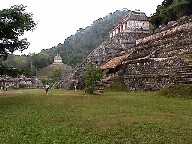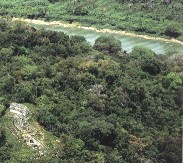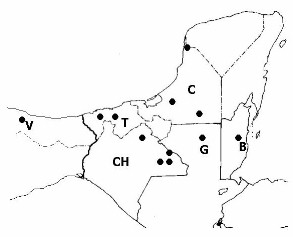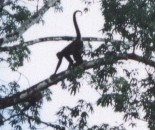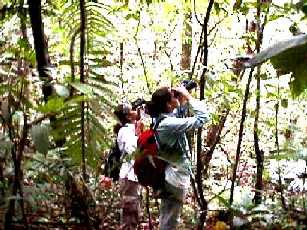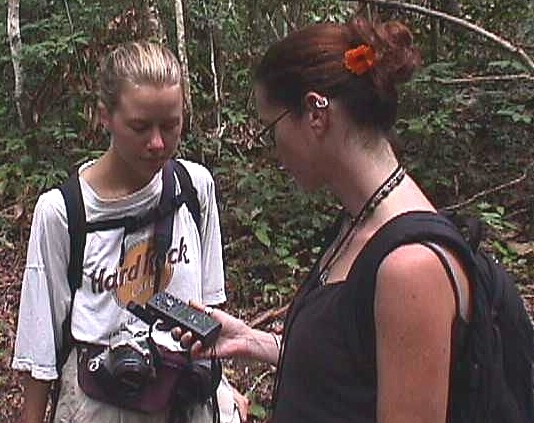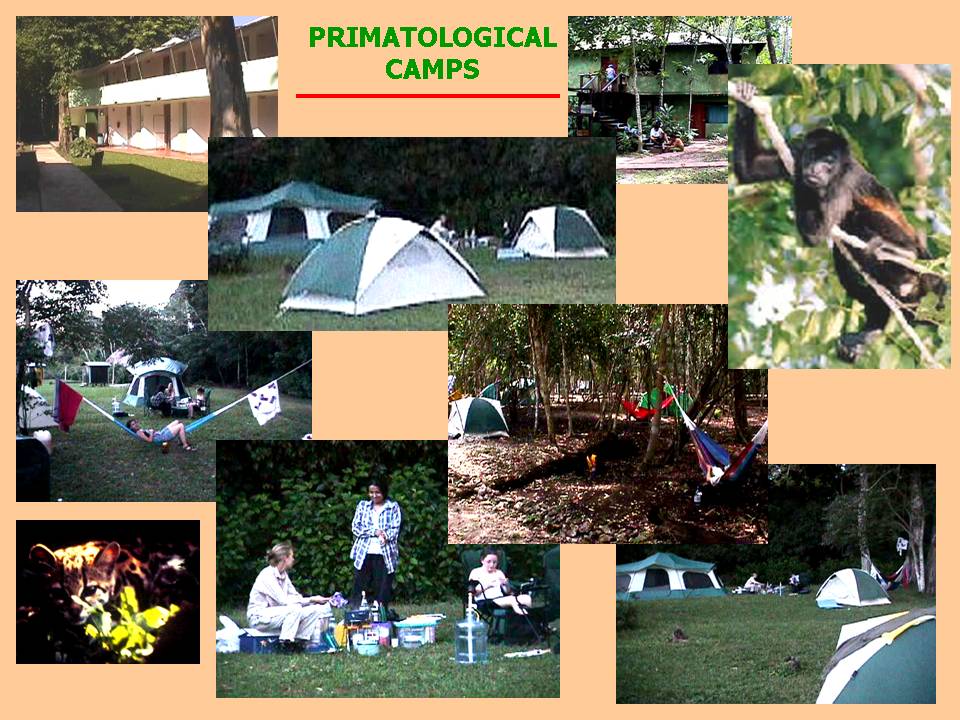|
Primate
population surveys |
LABORATORIO DE PRIMATOLOGIA |
Population
surveys of Alouatta palliata, A. pigra and Ateles geoffroyi:
This line of research is aimed at gathering information about where
populations are located and about the size and demographic structure of such
populations. Explorations of remote areas harboring extensive forest tracts is
a priority, but adjacent fragmented landscapes are also surveyed. Once
populations are found, we proceed to obtain data on their size and demographic
structure, as well as on their state of conservation and that of their
habitats. Some sites in southern
Sites of concentration of medium and long-term primate surveys are shown
with the yellow dots. From left to right: Los Tuxtlas; Comalcalco, Yumká and
|
Some of the sites surveyed are the
protected forests surrounding many Mayan archeological sites |
|
|
|
|
|
|
|
|
In 2002 these surveys have been extended to Bermiuda Landing in
|
|
|
|
|
|
Population surveys of wild primates in southern
|
|
|
|
|
|
|
|
|
Searching for primates in the rain forests of
southern Demographic parameters of primate populations under consideration in
these studies are the size of the population, number of troops or subgroups,
distribution of age and sex classes, sex ratios among adults and non adults,
adult female to immature ratios, etc. Population density with respect to the
area sampled as well as the state of conservation of the primate habitat is
also important measures. General conservation pressures such as habitat
destruction and degradation, degree of habitat fragmentation, extraction of
hardwoods, hunting and traffic of infants as pets are variables investigated
in our studies. |
|
|
Housing conditions of field work for our team range
from the magnificent infrastructure of the field station Los Tuxtlas to more
rustic facilities, where most of the time we camp by the edge of or inside
the forest, and take turns cooking our meals. |
|
|
|
|
Results of these surveys can be found in the publications listed under
"publications of the primate lab" in the main page.
Support the conservation of tropical rain forests and their primates in
southern Mexico
Copyright @ 2006 Alejandro
Estrada
